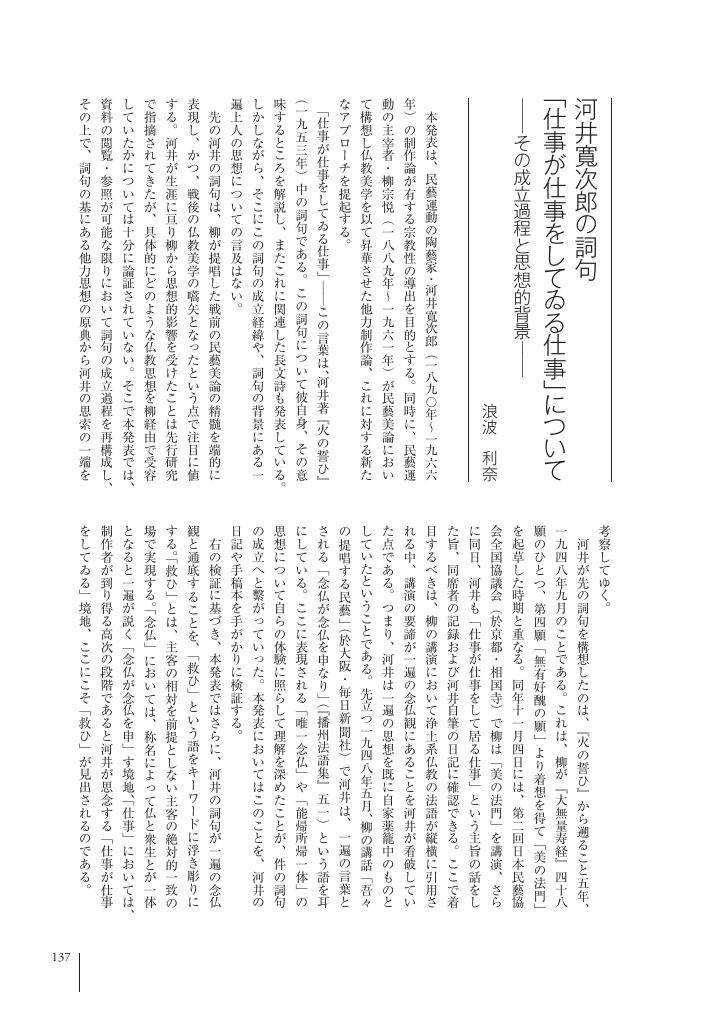1 0 0 0 OA 河井寛次郎の詞句「仕事が仕事をしてゐる仕事」について その成立過程と思想的背景
- 著者
- 浪波 利奈
- 出版者
- 美学会
- 雑誌
- 美学 (ISSN:05200962)
- 巻号頁・発行日
- vol.71, no.1, pp.37-48, 2020 (Released:2022-02-16)
The present study aims to clarify that Buddhism influences the aesthetic thoughts of KAWAI Kanjiro (1890-1966) in the post-war era, focusing on his word: “Work in which work does its work”. He got the idea of this motto in September 1948, thereafter it appeared in his collected essays “Hi-no-Chikai” [The Oath of Fire] published in November 1953. Looking closely at his diaries and notes, this paper investigates how it developed from his original thoughts on artistic creation. It became clear that the doctrine of Ippen (1239-1289) brought this motto to its completion. Kanjiro got the first suggestion from YANAGI Soetsu (1889-1961). His lecture “Mingei We Propose” (May 1948) quotes Ippen’s teaching: It is Nembutsu which does Nembutsu (i.e. Pray does its pray). According to Ippen, oneness of the prayer and the Amitabha Buddha is established in the moment of pray. Kanjiro took Ippen’s idea of the unity and expanded a concept of self-organizing function of artistic creation (work), where the artist or craftsman thoroughly merges in and beauty, as Kanjiro puts it, emerges from. Taking this into account, further this paper takes the concept ‘salvation’ into consideration and sees the similarity between Kanjiro and Ippen.
1 0 0 0 OA 河井寬次郎の詞句 「仕事が仕事をしてゐる仕事」について その成立過程と思想的背景
- 著者
- 浪波 利奈
- 出版者
- 美学会
- 雑誌
- 美学 (ISSN:05200962)
- 巻号頁・発行日
- vol.70, no.2, pp.137, 2019 (Released:2021-05-08)
